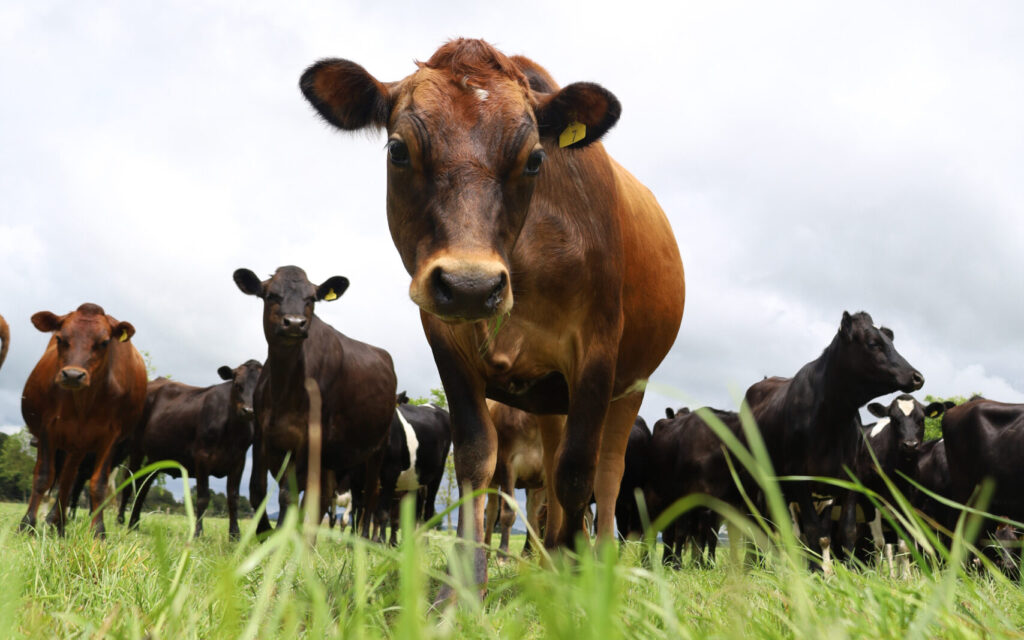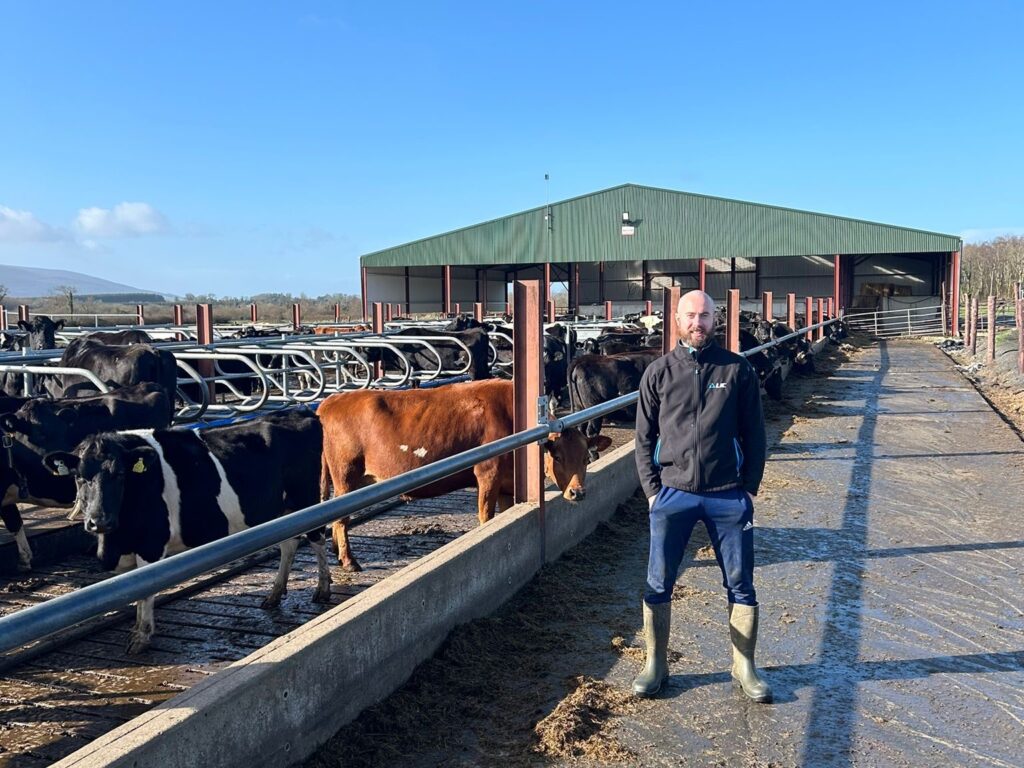Input costs and carbon footprint are among the forces pushing dairy producers to make more milk from grass. Supporting AHDB’s grass campaign, grassland specialist Piers Badnell suggests even higher production herds can get more milk from grazing.
Grass-based systems are more typically associated with spring calving, low-input/output, grazing-based herds. But most higher yielding herds calving at other times of year—either year-round or as an autumn block—could make much more from grazed grass.
And, with input costs soaring and carbon footprint regarded as a measure of growing importance, there’s every reason to make 2022 the year for stepping up output from grazing.
This message comes from Piers Badnell, farm consultant with LIC, who says a herd giving up to 9,000 to 10,000 litres can make equally good use of grazing as a 5,000-litre herd. However, he warns that this won’t happen by guesswork or without good planning and management, and may require a change of mindset.
Selecting grazing cows
For a start, he says you must have the right kind of cow. This doesn’t mean a long-term approach to breeding—although this can help—but it does mean choosing the right cows within the herd.
“The guide is to choose cows for grazing that are giving 30 litres/day or less, and have been PD’ed to confirm in calf,” he suggests. “With a couple of provisos, you can treat these cows in fundamentally the same way as those in a grazing-based system.”
The first prviso Mr Badnell cites is that unlike during winter housing, where cows are typically presented with more than they can eat, on grass they should be kept at the ‘edge of their appetite’.
“This is absolutely not controlled starvation. “It’s about asking the cow to keep her part of the bargain. Our part is to put high quality grass in front of her to eat.”
This can involve brinkmanship, according to Mr Badnell, who accepts that cows may take a short while to adjust. “Yes, your milk will drop, and a 30-litre cow could drop to 20 litres in a couple of days. But the group will start eating and milk will recover, and is quite likely to settle at between 23 and 27 litres,” he believes.

Work out costs
Acknowledging that producers are frightened of losing litres, he urges them to work out the costs. “If they settle at 25 rather than 30 litres, they have lost around £1.50 to £1.75 per cow per day,” he says.
“Don’t take my word for it. Work out the costs of the alternative for yourself—that’s the cost of keeping her in the shed, including feed, bedding and scraping—and you’ll come up with a figure for your own herd.”
He says that this approach represents a big change for the cow. But it’s usually an even bigger psychological change for the person managing the cows.
In a similar vein, lower levels of butterfat may also need to be accepted. “High oil in grass does suppress fat—something to be avoided if it takes you into a penalty situation,” he warns. “But, again, if your fat drops from, say, 4% to 3.8%, you may lose income although you will probably make more money.”
Any system based on grazing depends on closely measuring the grass presented to the cow. “I’ve seen the painful evidence of lost milk from cows whose dry matter intakes weren’t known,” he comments.
Know your grass growth
Assumptions about intake must never been made, and grass must be regularly plate metered and budgeted. “If 200MJ of metabolizable energy is needed by the cow every day and you only feed her 150MJ, then she will lose a lot of milk and body condition—with all of the knock-on effects,’ says Mr Badnell.
This means knowing each paddock’s entry cover, being aware of the residual and working out what can be grazed from each paddock in the rotation. For example, if entry covers are close to 2,800kg DM/ha and residuals are 1,500kg DM/ha (perhaps 1,600kg DM/ha for a Holstein—which is not an aggressive grazer)—then you know that you have 1,200kg to 1,300kg DM/ha of grass available.
The process of budgeting grass can be further improved by following grass growth patterns in your area which are monitored and published by AHDB. “This shows there is little variation in growth on the same date in different years, apart from in years of serious drought,” he maintains. “This will help you assess what grass you have and what you should have to come.”
Assess cow requirement
Knowing the cow’s requirement is also imperative. It needs a clear understanding of her demands for milk production, maintenance and to support other functions, such as pregnancy and even walking.
Use the Forage First guide from AHDB to calculate a cow’s feed requirement. The guide provides information and advice linked to reducing feed costs and optimising the benefit of forage area.
Maintaining quality
Maintaining grass quality through the season is another essential part of the producer’s management skills. “Well managed grass can be maintained at an ME of 12MJ/kg DM from February to November,” says Mr Badnell. “This is consistently better than silage, and achieved by grazing at the 2.5 to three leaf stage, rather than allowing the grass to mature.”
Even on some long-term leys and permanent pasture this is possible to achieve, where putting the grass plant to work can lift the sward’s ME. “However, if the cows are laxly grazed or overallocated, you won’t hit target residuals and ME will decline,” he warns.
This is similarly the case if turnout is late, which sets up grass to get ahead of the cows. “February or March is not too early for turnout and by April you have missed the boat,” he comments. “If the grass gets away from the cows and covers increase to 3,500 to 4,000kg DM/ha, the cows can’t eat it fast enough and in subsequent grazing rounds its quality declines.”
It’s also essential to know the dry matter of grass as this can significantly influence dry matter intakes. “This can range from 15% to 25%, depending largely on weather,” says Mr Badnell.
Supplement policy
There will be times of year when supplementation is needed, particularly at the beginning and end of the season but he says that to get a cow to perform at grass she needs to focus on grazing.
“Grazing does not work if you keep feeding her with forage or a total mixed ration in a trough, as this merely leads to substitution. Giving 1kg of a forage-based buffer feed displaces 1kg of grazed grass and takes the cows; focus away from grazing well,” he maintains.
Farm infrastructure
Acknowledging that stepping from a fully trough-fed situation into grazing can require perseverance, Mr Badnell says that the system requires an infrastructure of tracks, fences and water troughs to set it up for success.
“This is quite a step for someone whose older cows have spent their lives at a feed trough.” However, he says that, in herds of up to about 10,000 litres, it can strip costs from the system and will ‘probably make more money’.
But he warns: “If you do it badly, you can easily prove grazing isn’t suitable—but that’s just poor grassland management.”
Keys to grazing high yielding cows
- Identify the right cows for grazing that are giving less than 30 litres and are PD positive
- Create the right infrastructure of tracks, troughs and fencing
- Know your cow’s needs, what your grass provides and balance any shortfall with concentrates
- Don’t routinely buffer feed with forage or TMR. Only feed a buffer at times of grass scarcity
- It is possible for grass to provide up to 200MJ of ME per cow per day when grass growth matches or exceeds cow demand
- Attend grassland discussion groups and visit farms using rotational grazing
*This article was originally published in British Dairying



